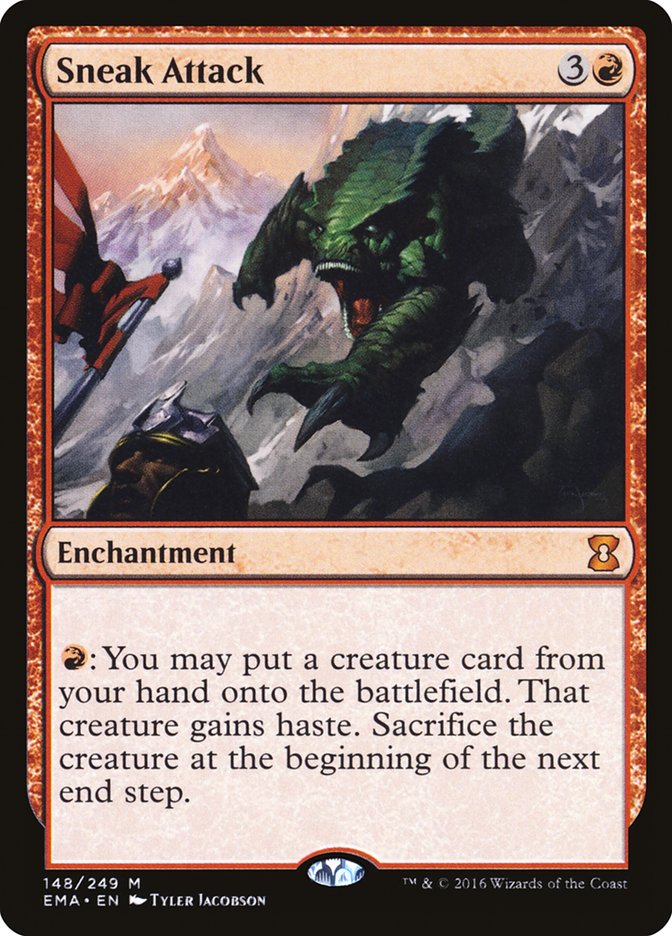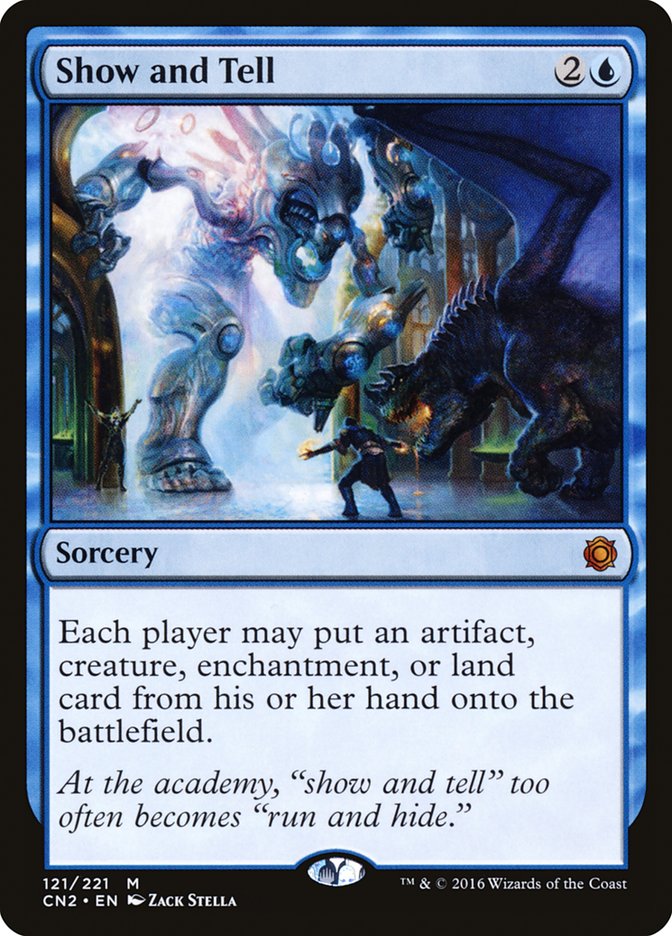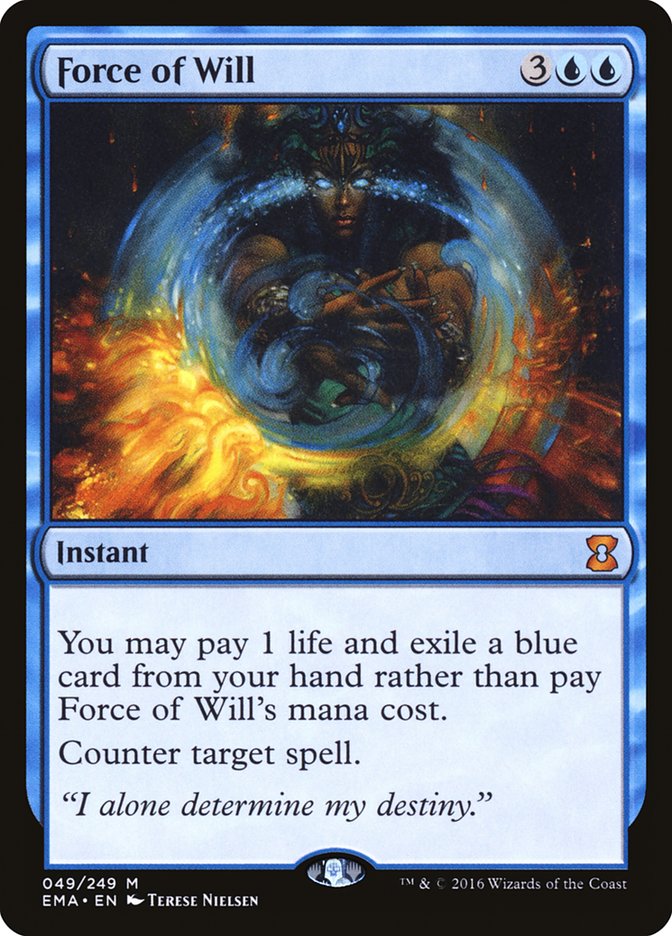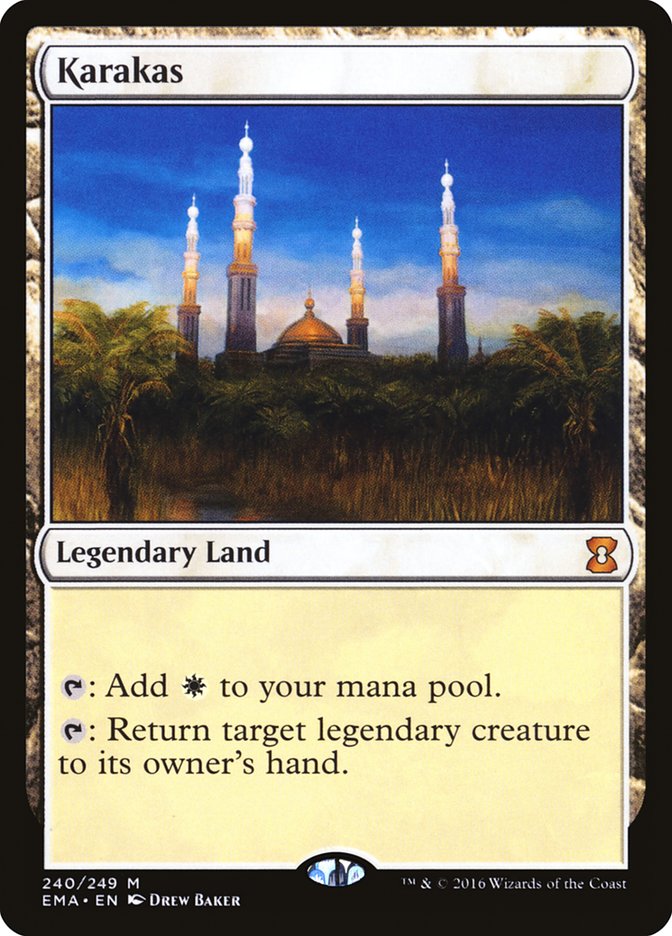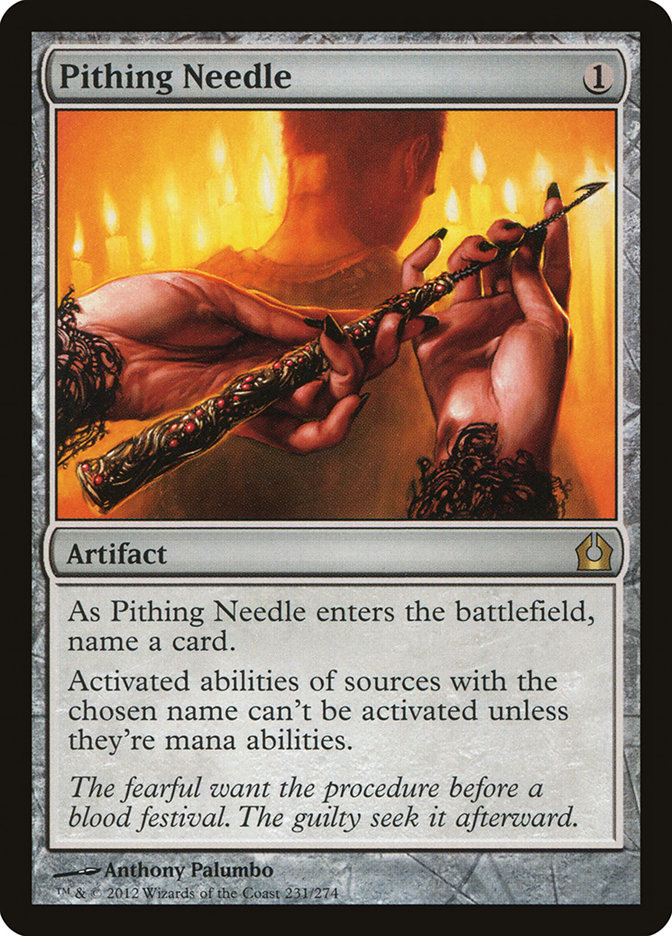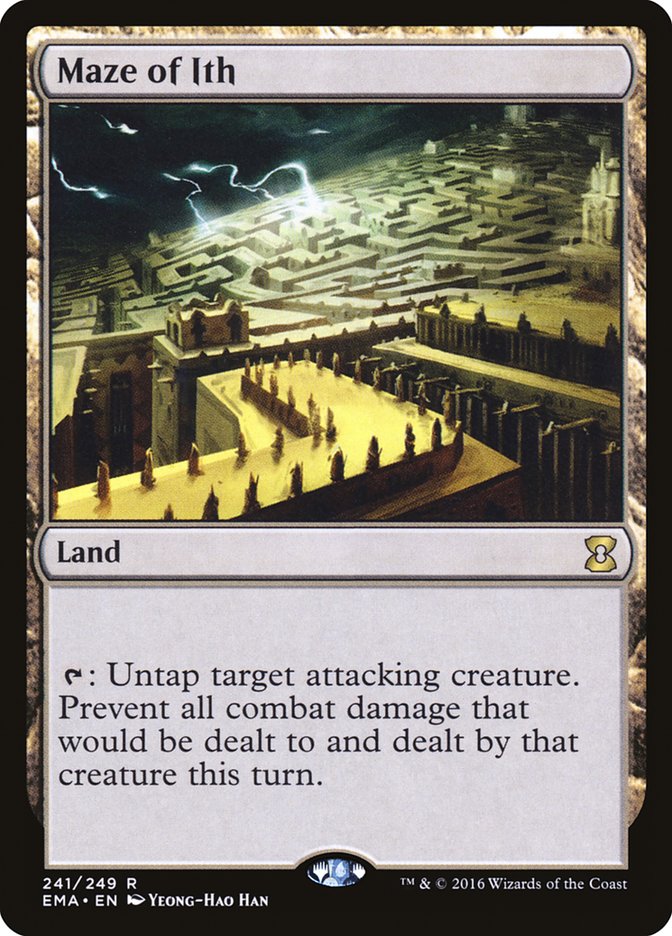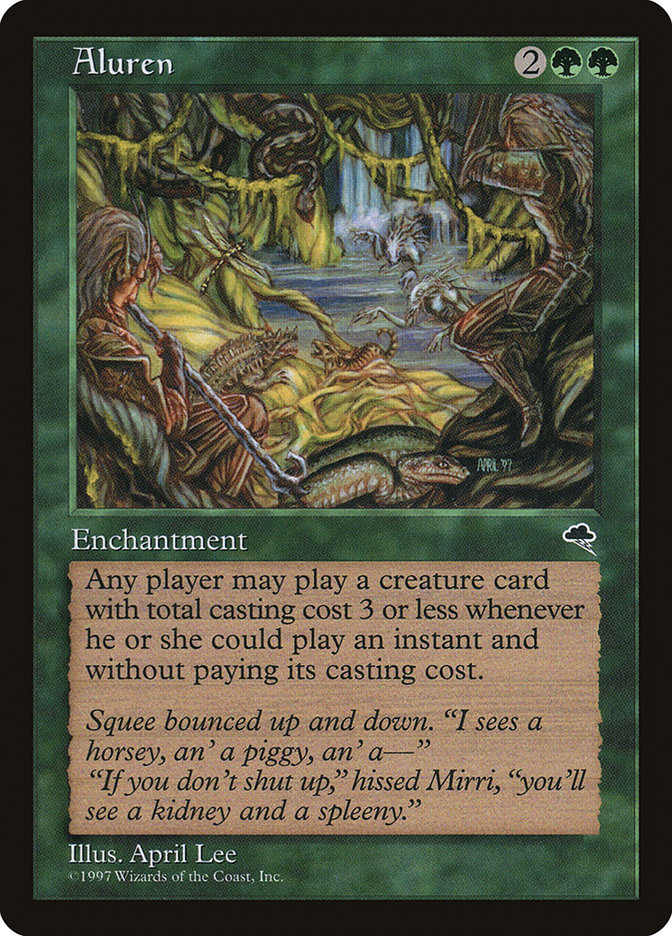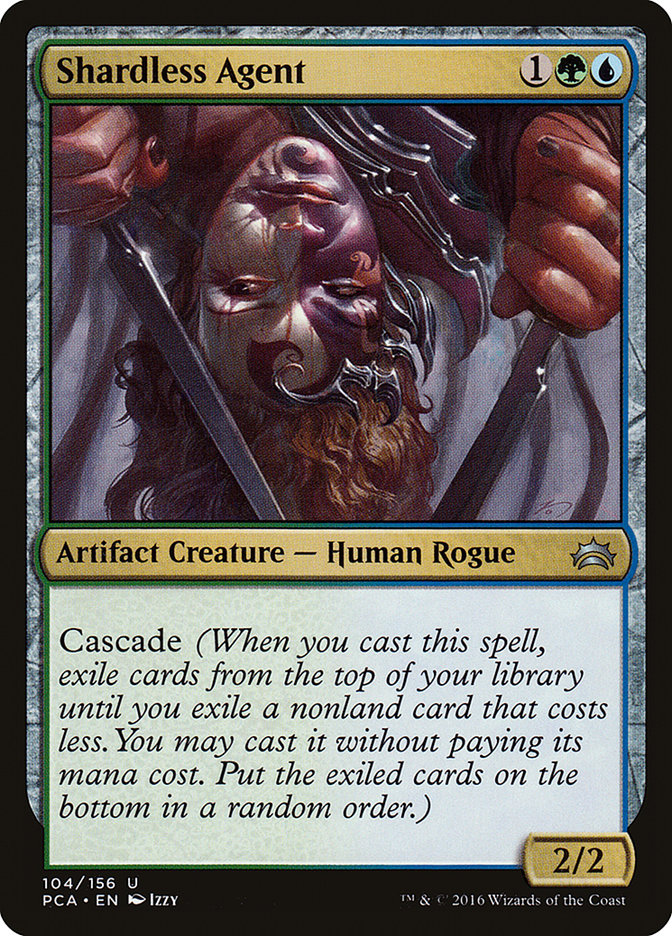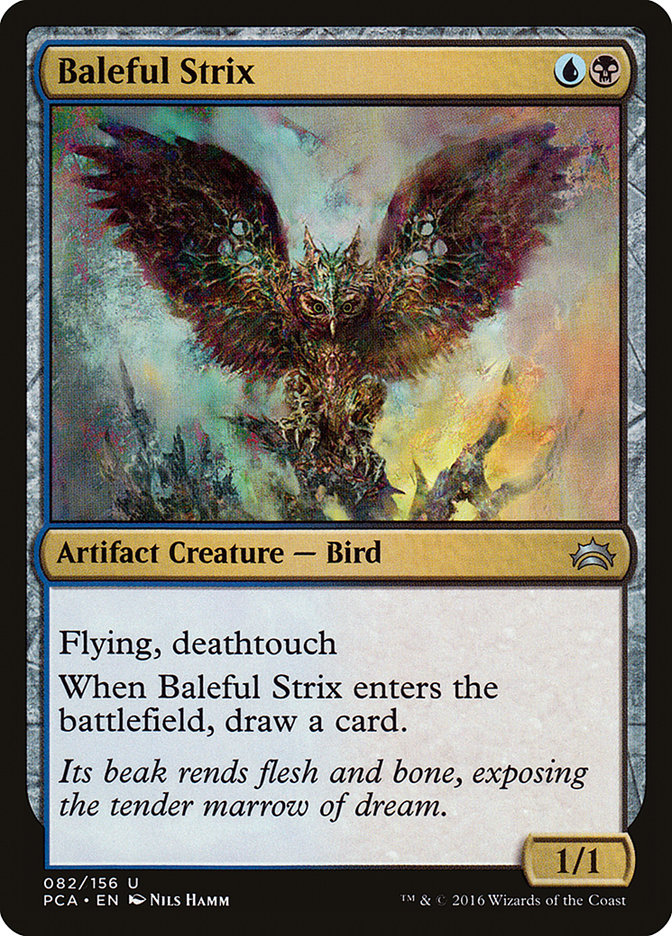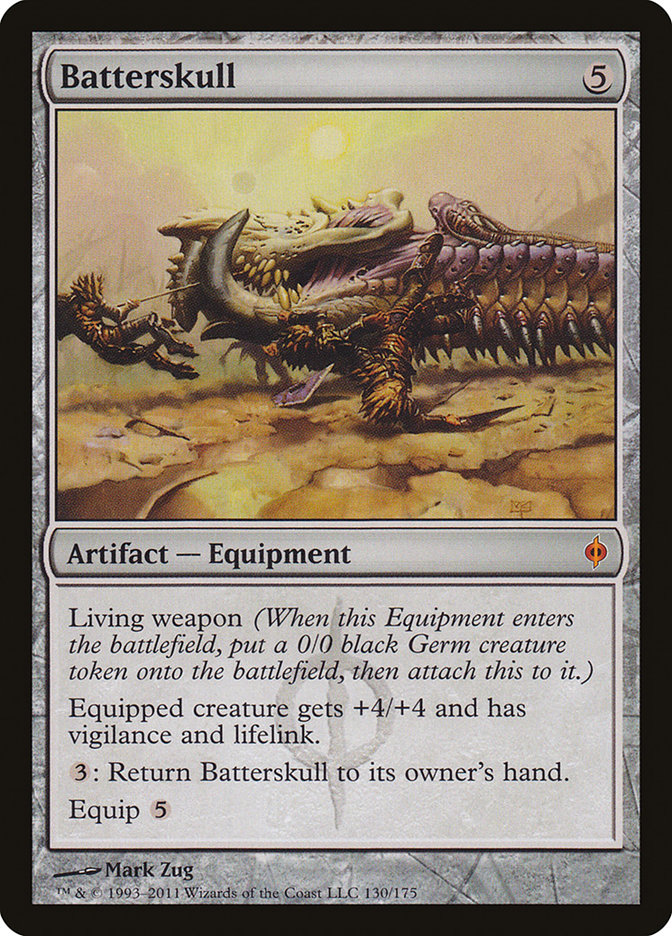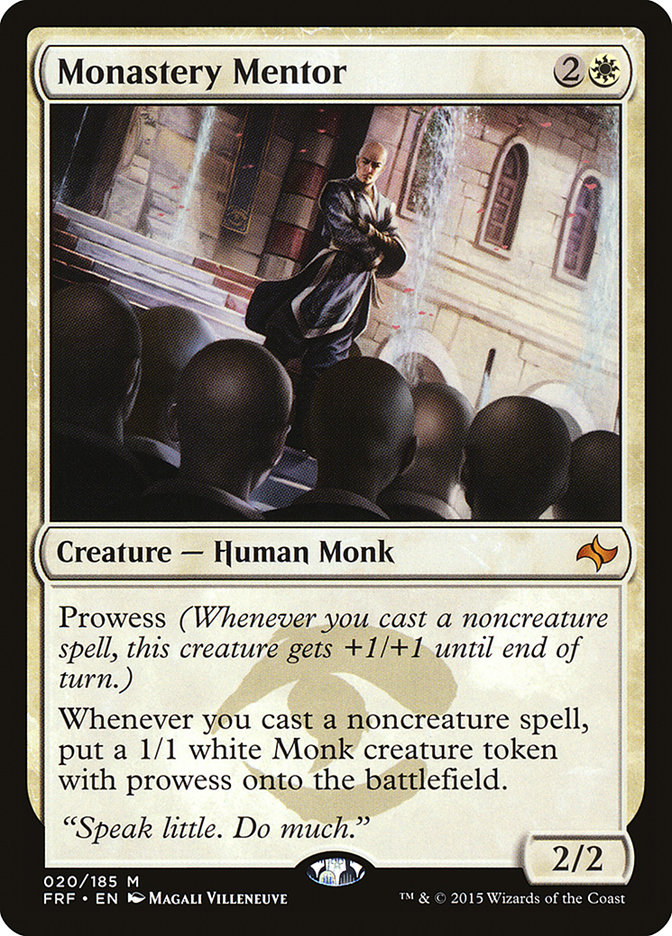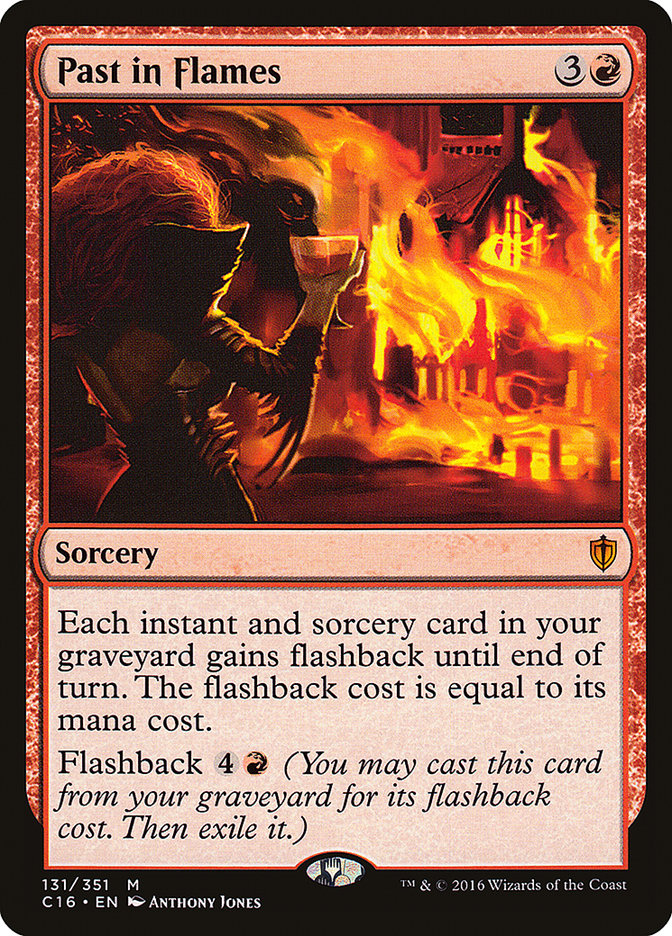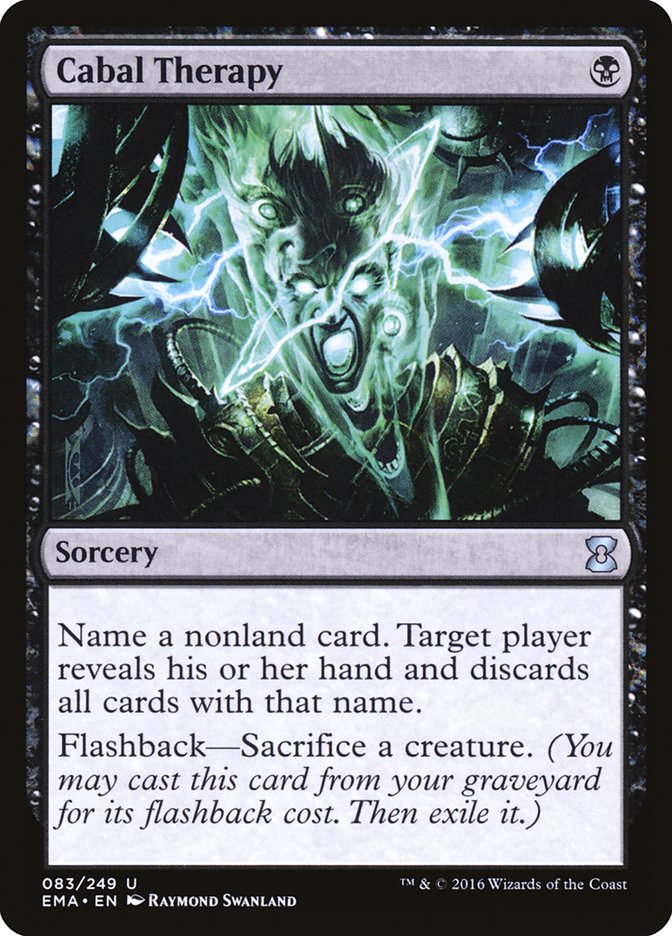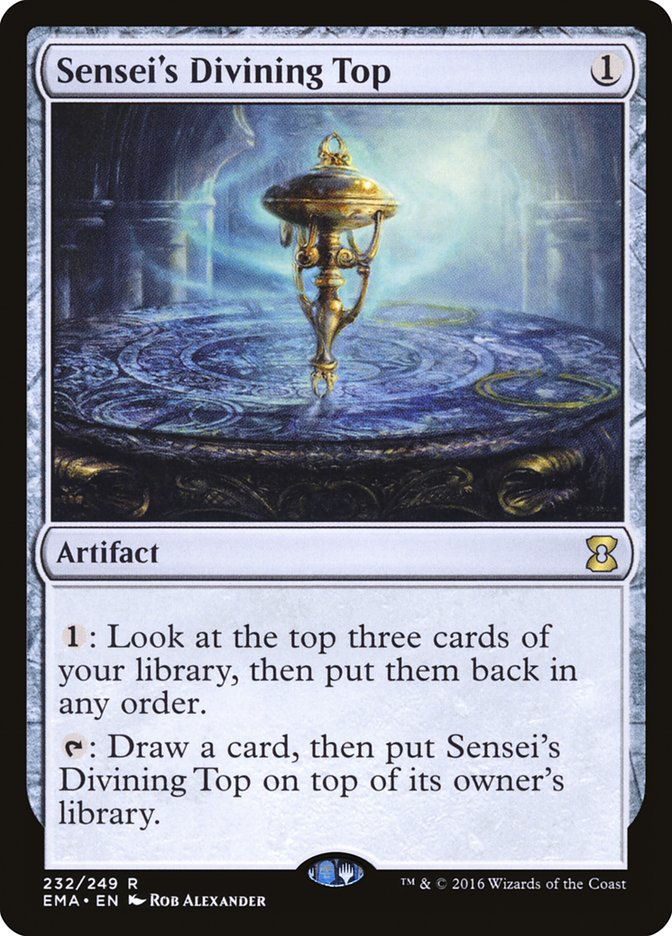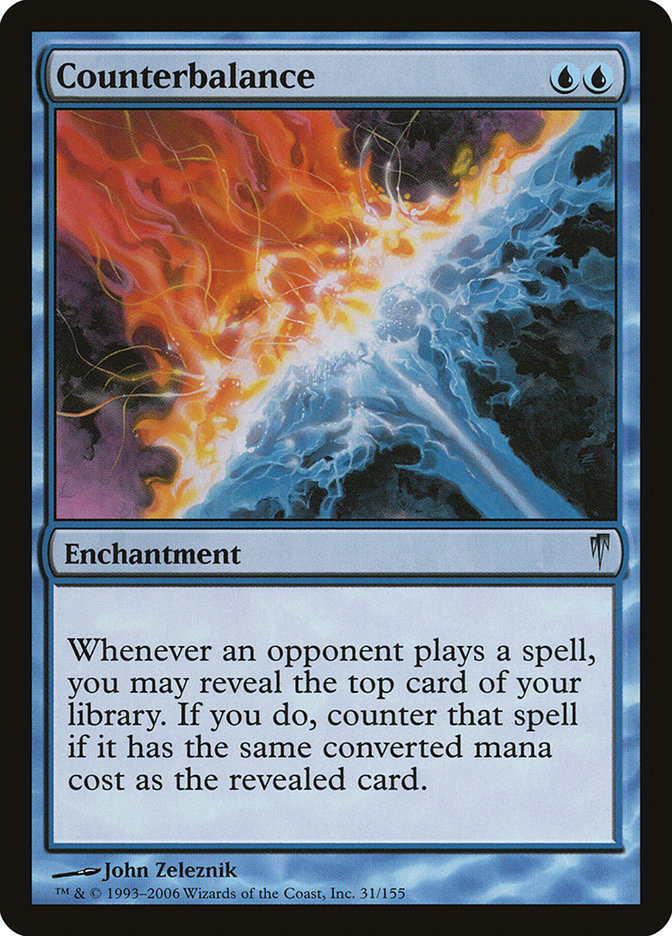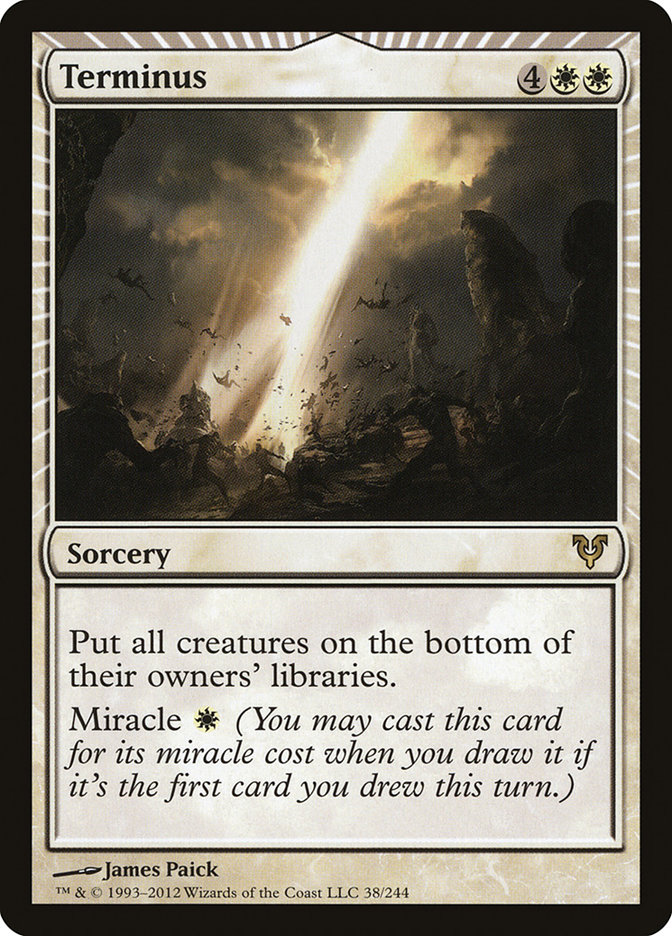Over the years, I’ve accumulated a decent amount of information about the Legacy format. Even though there have been some cards that warped the format, and were eventually banned, most of the decks have stayed the same. Or, at the very least, their functionality remains intact, even if the players in the deck have changed.
Legacy is a large format full of a variety of strategies, and nailing down the entire format for one tournament can be difficult. With that in mind, we’re going to focus on the eight decks I think you’re most likely to face, their strengths and weaknesses, and what you need to know going into the matchup in order to beat them. Legacy Grand Prix are special for a number of reasons, but mostly because many of the participants are likely playing in their first or second ever Legacy event. And for players that aren’t like me or the other regular StarCityGames.com Open Series grinders, there are a lot of little things you could learn that might be the difference between losing and winning a match.
I’ve written a good chunk of articles over the years focusing on broad strokes for people who are new to a specific deck or format. This is no different. But if you want a potential leg up on your journey to becoming champion of Grand Prix Louisville, let’s get started.
Creatures (8)
Planeswalkers (1)
Lands (19)
Spells (32)

I talked a good bit last week about the specific changes I would make to Sneak and Show, including moving toward a build that has answers to virtually any problem that could arise. If you are planning on playing Sneak and Show, you can refresh yourself on the deck here. Otherwise, if you want to beat Sneak and Show, you have to know a few key specifics.
Sneak and Show isn’t a normal combo deck. While you are assembling a two-card combo (Show and Tell or Sneak Attack plus gigantic monster), you only really have to resolve one of those cards to win the game.
You just need the second part in your hand at some point. Unlike Storm or other traditional combo decks, Sneak and Show doesn’t have a lot of moving pieces. It casts a bunch of cantrip spells like Ponder, Preordain, and Brainstorm to help find the combo pieces, but it can set up the combo over the course of a few turns.
They play Spell Pierce and Force of Will as protection, which can make it difficult to stop their combo if you give them enough time. Spell Pierce can stop discard effects or even counter an opposing Force of Will if the opponent hasn’t left up enough mana. They rarely use Force of Will to stop something that is progressing your own gameplan, so long as that card doesn’t directly impact what they’re doing. They can’t interact with what you’re doing outside of those two counterspells.
Since their combo is so easy to assemble, they can even set it up multiple times. That means one of two things: you need to have a lot of disruption to beat them, or you need to put a big clock on them while you’re putting your disruption to use. Decks that can combo faster than Sneak and Show are also problematic, especially if they are equipped with a lot of their own disruptive elements. For example, Reanimator is an especially terrible matchup, since it features discard and a faster combo, and casting the card Show and Tell is actively dangerous. The downside to something like Reanimator is that your opponent is likely to have more cards that directly stop your combo.
If you’re looking to beat Sneak and Show, I recommend trying to hit them on every front possible. Cards like Karakas and Pithing Needle are inexpensive permanents that could shut down most of their deck, and the combination of the two is insanely tough to beat.
Wasteland can be problematic when combined with a clock or more disruptive elements that tax their mana (think Thalia, Guardian of Thraben). Cabal Therapy mixed with one or two other forms of disruption can also be effective. The deck I’m most afraid to play against while piloting virtually any combo deck is Delver with discard elements. Hymn to Tourach, Cabal Therapy, and even Thoughtseize are tough to beat when backed up by Force of Will and Wasteland.
Hitting a deck like Sneak and Show on as many fronts as possible will make life a living hell for them.
Lands (35)
Spells (25)

The Lands deck just obliterates “fair” decks and has a good chance against a lot of the combo decks in the field. It can act like a prison deck or a combo deck, depending on the draw and the matchup. Ghost Quarter and Wasteland put a lot of pressure on your mana, and Punishing Fire plus Grove of the Burnwillows can stifle many fast starts from creature-based decks.
For the most part, this deck will only be defeated by fast combo decks that don’t get beaten by Karakas, but any deck can beat it with enough interactive pieces. On occasion, a single Wasteland can win you the game, taking out their Maze of Ith or shutting down their all-in on Thespian’s Stage plus Dark Depths.
At other times, graveyard hate taking away with Life from the Loam engine will shut down their ability to go long. Even Counterbalance keeping Life from the Loam in check could be enough to win the game on its own.
The Lands deck is favored against most fair decks, which could make it a good choice for the right metagame, but Legacy is full of insane hate cards that could be problematic for Lands in general. Blood Moon, Back to Basics, and any similar effects are devastating to a deck like Lands and will generally require an immediate answer.
Creatures (23)
- 1 Birds of Paradise
- 1 Eternal Witness
- 1 Academy Rector
- 1 Cavern Harpy
- 1 Arctic Merfolk
- 1 Parasitic Strix
- 4 Baleful Strix
- 3 Shardless Agent
- 4 Deathrite Shaman
- 1 Reclamation Sage
- 1 Quickling
- 4 Recruiter of the Guard
Lands (20)
Spells (17)

While Jeff Hoogland at the Players’ Championship was the first time I’ve played against Aluren in a long while, I have recently been playing against it on Magic Online quite a bit. I’m posting this deck mostly because I think it will be a sleeper hit at the Grand Prix, and I’m not exactly sure just how popular it will be. Regardless, I’d rather you know it exists, and how to beat it if possible.
First of all, the strength of this deck is that it can play like a normal green creature deck. Shardless Agent, Deathrite Shaman, and Baleful Strix all give the deck a normal, midrange feel against stuff like Delver, but it also has a two-card combo that is fairly hard to disrupt. Of course, stopping Aluren isn’t all that difficult in and of itself.
It costs four mana, after all. But it is wrong to think you can rely on Force of Will to get the job done all by itself. The deck packs a ton of disruption with discard and doesn’t even need to cast Aluren to get the job done.
I watched Jeff play at the Players’ Championship, and he had many games firmly won without casting the card Aluren. Of course, when he did cast Aluren, it usually resulted in winning the game on the spot. The deck has a lot of permutations that can kill the opponent, but they most frequently begin with Recruiter of the Guard. The deck also packs a toolbox set of disruptive creatures to snag with Recruiter of the Guard, which can be deployed rather quickly (along with discard effects) in combination with a first-turn Deathrite Shaman.
Many of the creatures gain card advantage on top of being strong in the defensive department, which means a normal control deck might have trouble just killing all of the creatures in the first place. I suspect that this deck is weak to Terminus and Miracles in general, but I’m not completely sold on that. I’d like to see the deck in action a little more before making a final decision.
The best way to beat Aluren is to have a gameplan isn’t soft to Cabal Therapy. Combo decks that hinge on a single card doing most of the heavy lifting will always have trouble against Cabal Therapy (assuming both sides hit a card). Baleful Strix in high numbers also seems like a nightmare for Delver decks. Aluren could secretly be the best choice for this tournament. I just don’t have enough data or experience with the archetype to confirm. Just be aware of what the deck is capable of, and understand that you need to kill them as quickly as possible.
Creatures (29)
- 4 Wirewood Symbiote
- 4 Quirion Ranger
- 1 Birchlore Rangers
- 4 Heritage Druid
- 4 Nettle Sentinel
- 4 Elvish Visionary
- 1 Scavenging Ooze
- 2 Craterhoof Behemoth
- 4 Deathrite Shaman
- 1 Reclamation Sage
Lands (20)
Spells (11)
Sideboard

I have trouble beating Elves with just about every deck I play. I don’t actually know why, but I can assume it is because Elves is just a great deck. Sure, they have trouble against Terminus, and there are a number of heartbreak cards that can dismantle their strategy (think Izzet Staticaster), but Elves is a resilient deck that thrives in a format featuring mostly fair decks (Miracles aside).
Chalice of the Void is particularly strong against the deck, but they will have ways to beat it. Green Sun’s Zenith into Reclamation Sage is one way, but they can also just cast Natural Order with Dryad Arbor (assuming they snuck one or two creatures onto the battlefield before Chalice of the Void). There are a lot of ways to interact with the Elf creatures on a general level, but there are few cards that can compete with the strength of Glimpse of Nature. It is a one-card combo that costs a single mana.
Elves can win in a lot of ways but mostly hinges on Glimpse of Nature and Natural Order. Grafdigger’s Cage shuts down Natural Order and Green Sun’s Zenith, two key elements in their consistency and speed, while stuff like Pyroclasm, Izzet Staticaster, or any spell that can take out two or more creatures is huge. In all likelihood, Elves will have at least one pilot in the Top 8 of the Grand Prix. It is a powerful deck that requires a skillful hand to pilot, and there aren’t a whole lot of decks that are actively good against it. The one thing keeping it in check right now is the presence of Miracles. But any traditional Elves player will still likely play Elves because that’s the “deck they know,” and by all metrics they hope to dodge Miracles in the tournament.
Creatures (27)
- 4 Mother of Runes
- 2 Serra Avenger
- 3 Flickerwisp
- 4 Stoneforge Mystic
- 2 Mirran Crusader
- 3 Phyrexian Revoker
- 4 Thalia, Guardian of Thraben
- 2 Recruiter of the Guard
- 2 Sanctum Prelate
- 1 Palace Jailer
Lands (22)
Spells (11)

I’ve played a good bit with this style of strategy over the years, and all I can tell you is that this deck will often just lose to itself. Overall, the power level in the cards isn’t very high. Any draw that doesn’t feature an early Aether Vial is significantly worse than every other draw in the deck. If you want to beat this deck, I would start there.
Like Elves, this deck can fight through removal pretty easily, but any recurring source of removal can be tough to overcome. Anything that kills creatures with one toughness and can be used multiple times will give the Death and Taxes player major headaches. It won’t always be game over thanks to some of the bigger creatures in the deck, but shutting down half their offense pressure is a big deal.
Discard is more effective in this matchup than Force of Will because the deck will often rely on Stoneforge Mystic to do a lot of the heavy lifting. If you can either kill their Stoneforge Mystic to stick the Batterskull in their hand or make them discard it after they search for it, the rest of their deck is full of cheap creatures that don’t actually hit very hard.
Like Elves, Death and Taxes shines in a fair format but also tends to struggle against Miracles. The card Terminus is backbreaking, even with an active Aether Vial, but its power can be mitigated thanks to Phyrexian Revoker locking down Sensei’s Divining Top. Mother of Runes is also less powerful against sweeper effects, even though it can lock down spot removal like Swords to Plowshares.
But unlike Elves, Death and Taxes offers a number of ways to interact with unfair strategies, so long as they don’t kill you before you can use one of those defensive measures. That’s why Storm is probably a bad matchup, even though they have a really tough time beating a resolved Thalia, Guardian of Thraben. This is also why you’ll see Mindbreak Trap out of the Death and Taxes sideboard from time to time.
Creatures (15)
Lands (19)
Spells (26)

Delver is a generic term referring to a deck featuring the card Delver of Secrets, but the joke is that very few Delver decks function the same. Some have discard, while others focus primarily on counterspells. Others are more removal heavy in order to gain a leg up against other Delver decks. And others still try to dodge that removal by playing creatures that are immune to removal (True-Name Nemesis) or create more creatures before hitting the graveyard (Young Pyromancer, Monastery Mentor).
The trick is recognizing which Delver deck you’re up against and understanding what tools they’re going to have that interact with you. Then try to play around them to the best of your ability.
Creatures (15)
Lands (19)
Spells (26)

This version of Delver splashes red just for Lightning Bolt, one of the best cards to combine with Snapcaster Mage. While this version of Delver can win the short-game with counterspells and pressure, it also has the ability to play a longer game with Snapcaster Mage, Gurmag Angler, and True-Name Nemesis. These creatures, when combined with removal and disruption, allow for a central core that is tough to “hate out.” The cards are all just generically good.
I would classify this as a “midrange” Delver deck. You probably won’t win the game until the fifth turn or later, but you have the tools to continually put pressure on the opponent while also presenting a fair amount of disruption. As a combo player, I wouldn’t love playing against this deck, but it isn’t as bad as this version:
Creatures (16)
Lands (18)
Spells (26)

Jim Davis has championed this version of Sultai Delver for the last year. Stifle is a tough card to play around and can lead to some free wins alongside Wasteland. Dark Confidant is also a nightmare for combo decks, since it applies pressure while finding more disruption for free. Any deck that can’t kill a Dark Confidant is going to have a lot of trouble against this archetype.
This version doesn’t have as much removal, and it also contains a fair number of “situational” disruption (like Stifle), so it could easily fall behind in any Delver mirror. If you plan on facing off against a lot of Delver decks, you should probably stay away from this version (the Combo Killer).
Creatures (14)
Lands (18)
Spells (28)

Now this version of Delver looks a lot like the old Dig Through Time version of Grixis Control that I played right before it got banned, but I’m not certain that’s a good thing. All the pieces feel like they’re doing something, but very little in the deck feels like it is actively working together. Young Pyromancer is not as aggressive as something like Tarmogoyf, which means your Daze and other soft counters are going to be worse. Delver tends to win and lose games by inches, meaning that you need every part of the buffalo to get the job done.
I’m not sold that this deck is better than what Gerry Thompson brought to the tournament, though I don’t suspect you’re likely to face off against it. However, I would recommend it for control lovers.
Creatures (12)
Lands (20)
Spells (28)

Switching gears…
Lands (14)
Spells (46)
- 2 Tendrils of Agony
- 4 Brainstorm
- 4 Cabal Ritual
- 2 Duress
- 4 Dark Ritual
- 4 Cabal Therapy
- 4 Lotus Petal
- 4 Lion's Eye Diamond
- 2 Chrome Mox
- 4 Infernal Tutor
- 4 Ponder
- 1 Ad Nauseam
- 2 Preordain
- 4 Gitaxian Probe
- 1 Past in Flames
Sideboard

Storm is a deck that is easily disrupted, but not easily beaten. The fact that they can beat you before you’re able to put a land onto the battlefield is disconcerting, but isn’t necessarily a guarantee. Like Sneak and Show, they tend to fold if you have two forms of disruption: something on the battlefield as well as counterspells or discard. Thalia, Guardian of Thraben is particularly tough for them to beat, but Legacy offers a wide variety of cards that do much the same (Thorn of Amethyst, Trinisphere, etc).
But Storm is notorious for killing you out of nowhere. Even if you’re able to put up a substantial wall of protection, they have a lot of dig spells to find the answer(s) to get out of the situation. On top of that, they play Duress and Cabal Therapy to make sure the coast is clear. That means they’re unlikely to lose to a single Force of Will, even though many of their combo turns revolve around Lion’s Eye Diamond.
Discard effects combined with Force of Will and other counterspells is also a good combination to throw at them. If you’re able to pick their hand apart early on, that could buy you enough time to find more disruption to lock the game up. If you’re a combo deck, even something like Leyline of Sanctity can change how the entire game operates. They’re no longer able to interact with you, and their primary win condition is shut down. Of course, that changes significantly if they’ve prepared for the worst and go for broke with Empty the Warrens or similar.
One very important piece of information for beating Storm is that many of their draws hinge on Brainstorm. I can’t even tell you how often I use Force of Will to counter Brainstorm in the matchup, mostly because I know they’ll likely find a discard spell in the process of smoothing out their draw. But, if you can snag their Brainstorm with a Spell Pierce or something, it will often set them far enough behind that you can develop a bit more, or just buy a bit more time.
The clock is always ticking in this matchup.
Creatures (8)
Planeswalkers (2)
Lands (22)
Spells (28)

Joe Lossett continues to prove that Miracles is one of the best decks in the format. Counterbalance is a powerful permanent for combo decks to beat, even without access to Sensei’s Divining Top. While there is some tension between versions that play Monastery Mentor and the “legendary” version that Joe tends to lean toward, I think both have their own strengths and weaknesses. For one, Joe’s version is a bit slower when it comes to closing games, often resulting in more draws for players that aren’t experienced with the archetype. Two copies of Sensei’s Divining Top and a Monastery Mentor can end the game in the blink of an eye.
The downside here is that Monastery Mentor isn’t blue, which means you have fewer cards to discard to Force of Will, but it also doesn’t actively disrupt the opponent. If you’re unable to get more than one Monk token before Monastery Mentor dies, it won’t impact the game all that much. Monastery Mentor shines when the opponent isn’t playing a lot of removal, making it an ideal win condition against combo decks for the clock it presents.
If I had to guess, you’re more likely to play against Joe’s version than anything, so here’s what you need to know:
Don’t counter Sensei’s Divining Top with Force of Will if you don’t have to. A first-turn Sensei’s Divining Top will help them smooth out their draws early on, but they can just as easily find another. Depending on what deck you’re playing, there will almost always be a better target: Terminus, Counterbalance, etc.
If you can help it, try not to run head-first into a Terminus. Losing more than one creature to Terminus is big in Legacy, because there aren’t a lot of forms of true card advantage. Any extra creatures swept away by Terminus will make it that much harder to rebuild and actually come back from it. Terminus is the reason why they play Miracles.
If your deck is bad against Terminus, that probably means your deck is bad against Miracles. I’d recommend having some big hitters out of the sideboard, like Jace, the Mind Sculptor or some other permanent that can’t be hit with removal. Their inability to pressure planeswalkers or deal with oddball permanents is their weakness.
If you are playing a deck that isn’t affected much by Counterbalance, then you’re also in good shape against the deck. Bricking Counterbalance is the easiest way to get a leg up on Miracles. That means more copies of Cavern of Souls, or just playing a deck with a wider range of casting costs. Sideboard options like Pithing Needle to shut down Sensei’s Divining Top are also tough for them to beat, and especially so if you’re not playing a deck that warrants sideboarding in Engineered Explosives or Wear//Tear.
Understanding What’s Important
Every archetype you face in Legacy will offer a different set of complications to overcome. And honestly, that’s why I’m a fan of decks like Sneak and Show. Regardless of what your opponent throws at you, there’s still the chance you put Griselbrand onto the battlefield on the first turn. The danger with playing decks like Sneak and Show or Reanimator is that they tend to get worse as the number of pilots rise.
As I’ve stated before, Legacy is full of cards that will give just about any archetype nightmares. And if your deck doesn’t have the tools equipped to beat those cards, a single resolved hate card could end the game on the spot. We see that a lot in Modern, but Legacy offers about ten or so more years’ worth of ridiculous stuff you need to know about. While it can feel safe to play a deck that is hard to hate out (like Delver), those decks often lose to themselves. Daze and Spell Pierce lose a lot of value in the mid- to late-game, and drawing too many of them in the wrong spot will ultimately lead to disaster.
I’m not going to lie to you. I’m probably going to play Sneak and Show. But, if I decide to play something different, my gut is telling me that Miracles is just too good of a deck not to play. You cover most of the bases in Legacy with Counterbalance, Force of Will, and Terminus. The rest you can clean up with Swords to Plowshares. And honestly, it doesn’t really matter how you choose to win the game. Entreat the Angels has never felt all that impressive to me, but it certainly gets the job done.
Like Modern, Legacy is a large format featuring a lot of different strategies, and coming prepared to beat all of them is a losing proposition. The archetypes are too different in what they’re trying to accomplish. Your best bet is to play the deck that most closely fits your playstyle, has tools to interact with any strategy, and has some sort of proactive plan. Even if you’re being reactive to close the game, you want something aggressive that can disrupt your opponent. If that means Counterbalance, then so be it.


